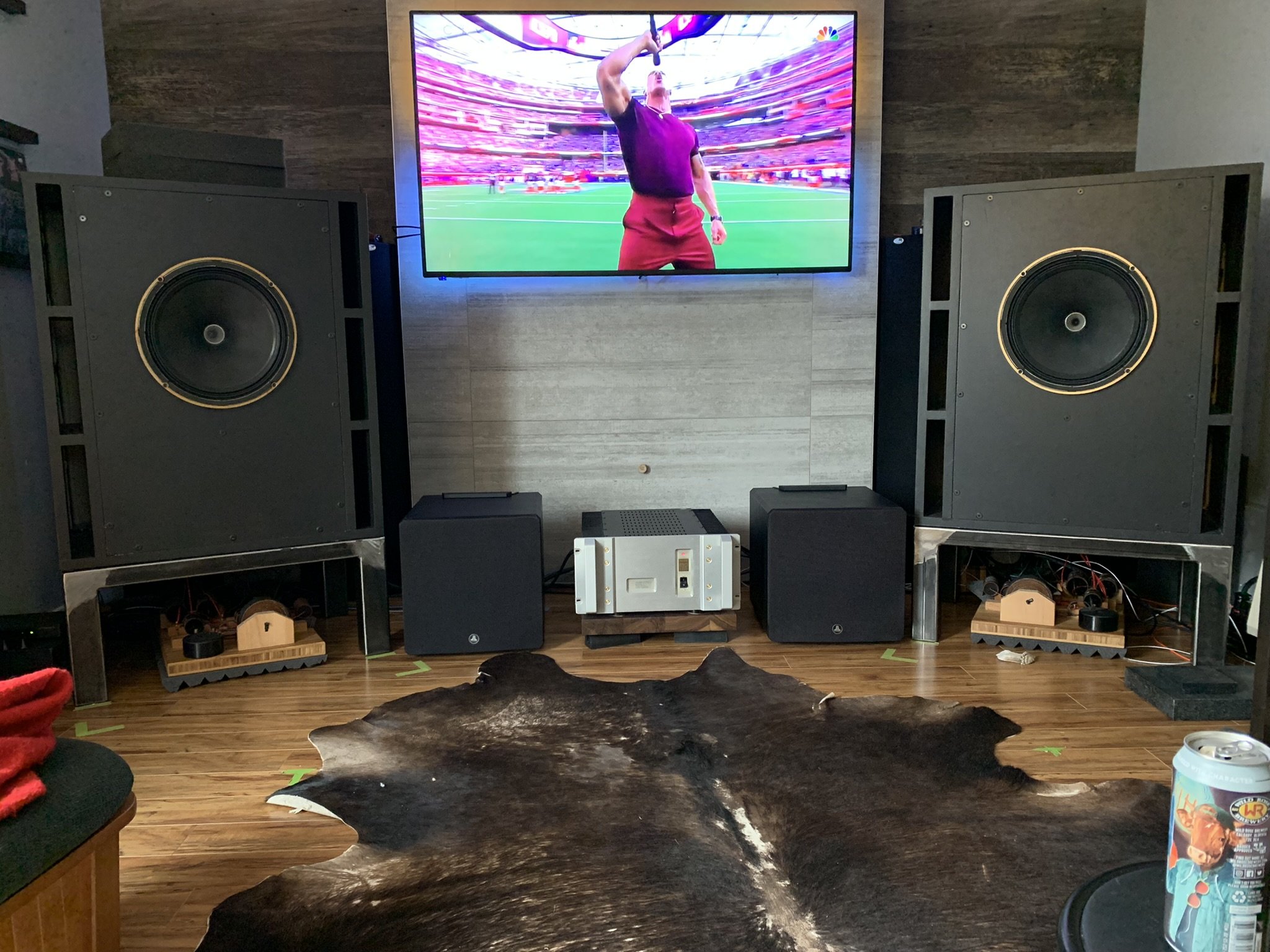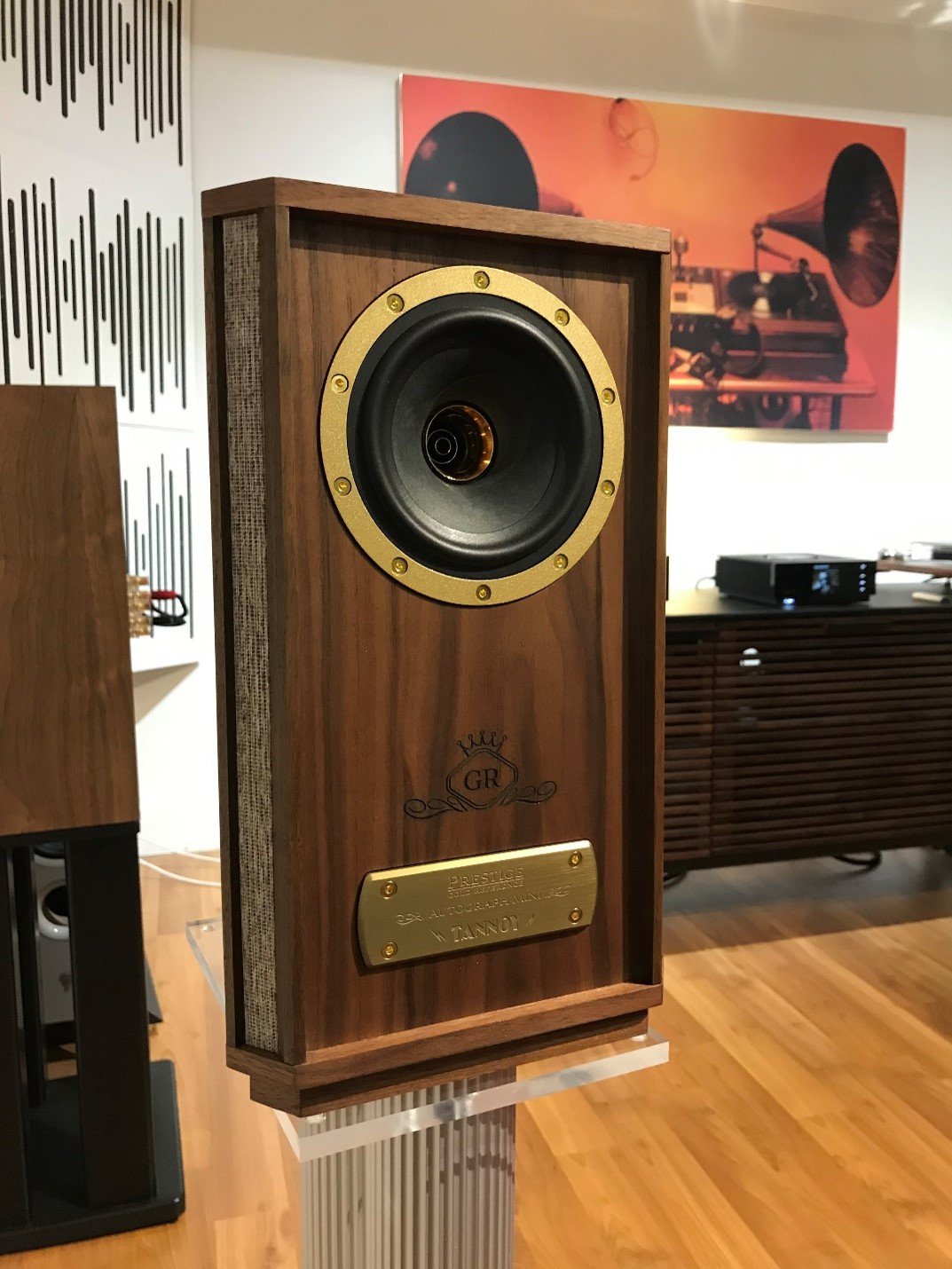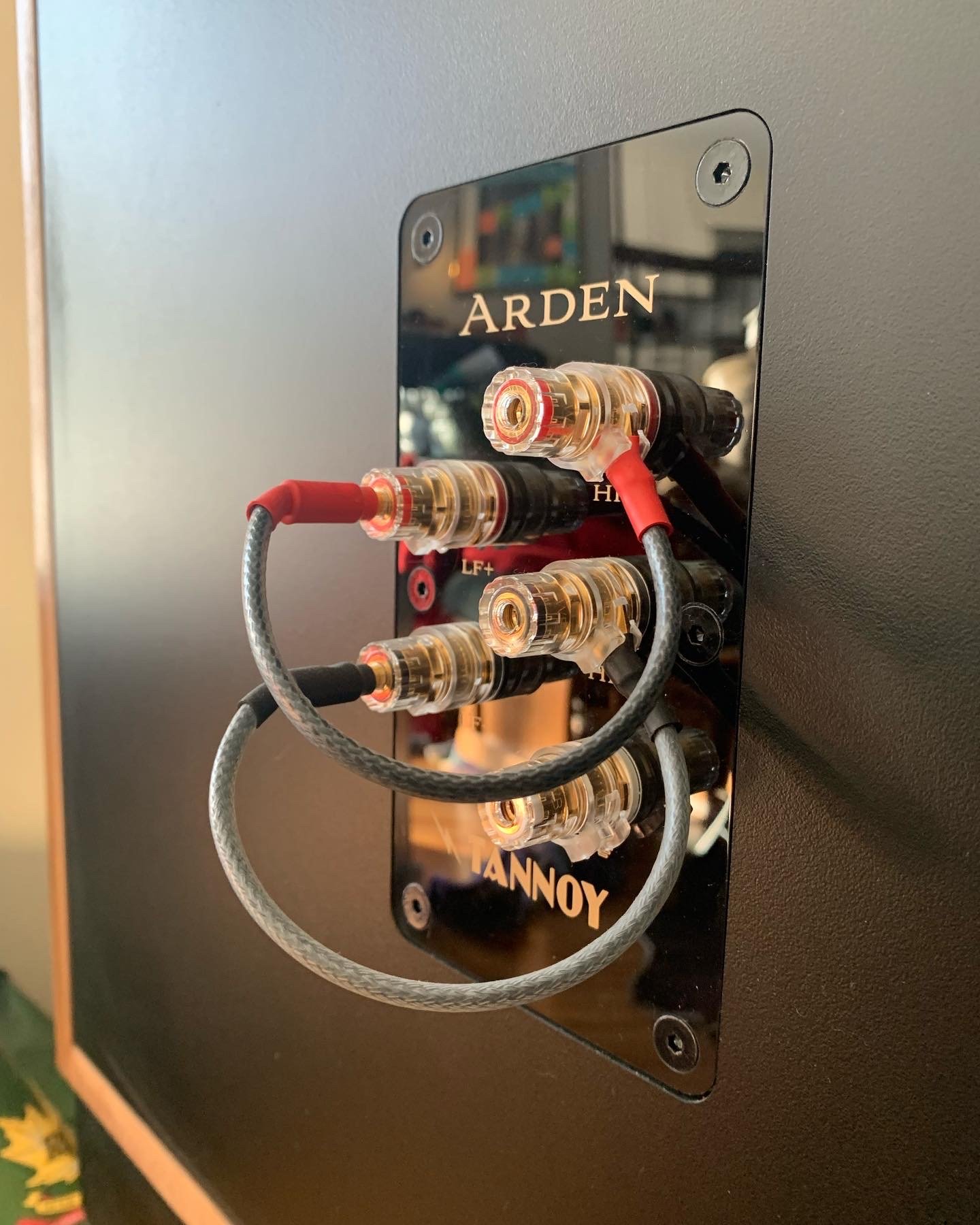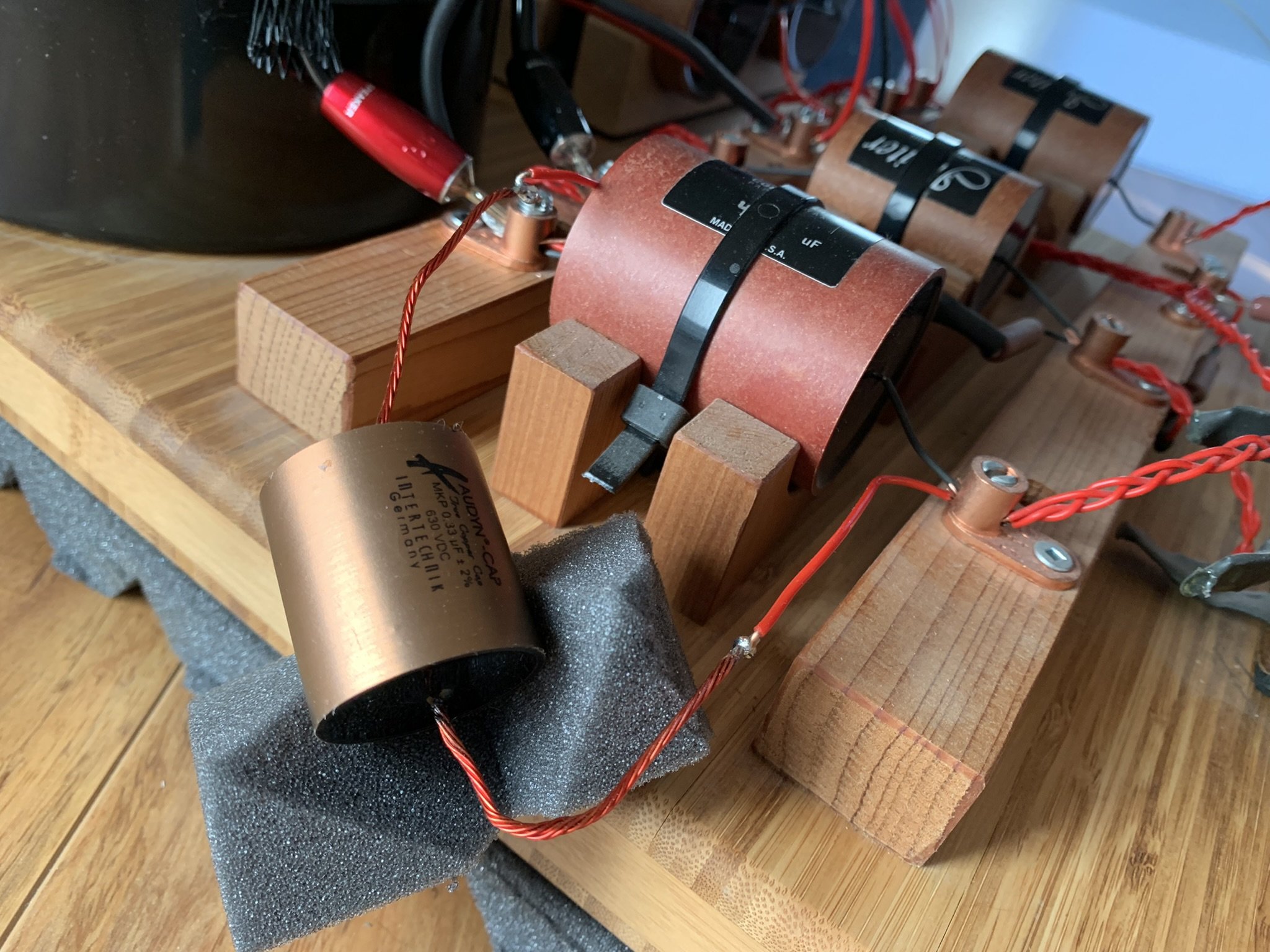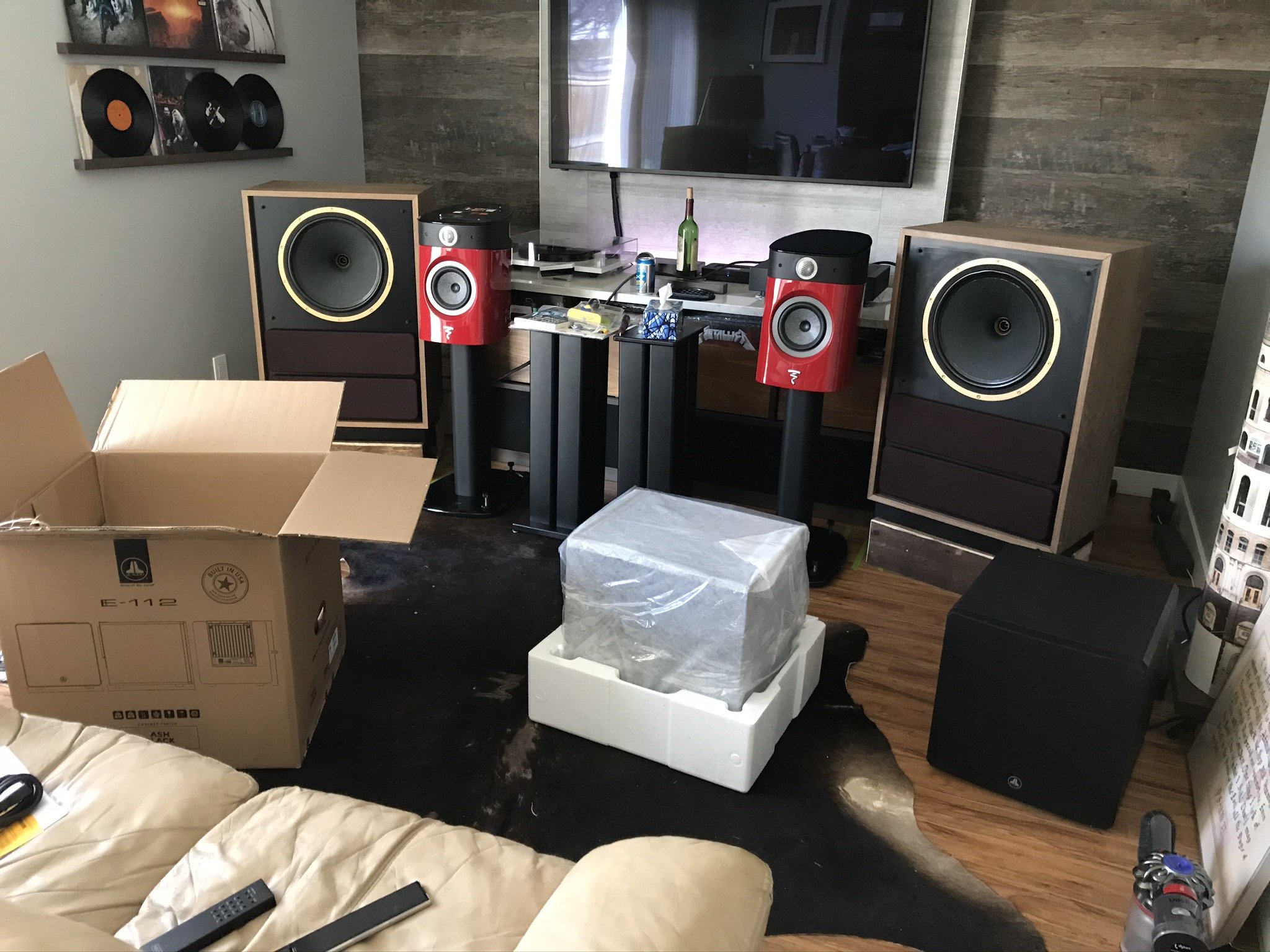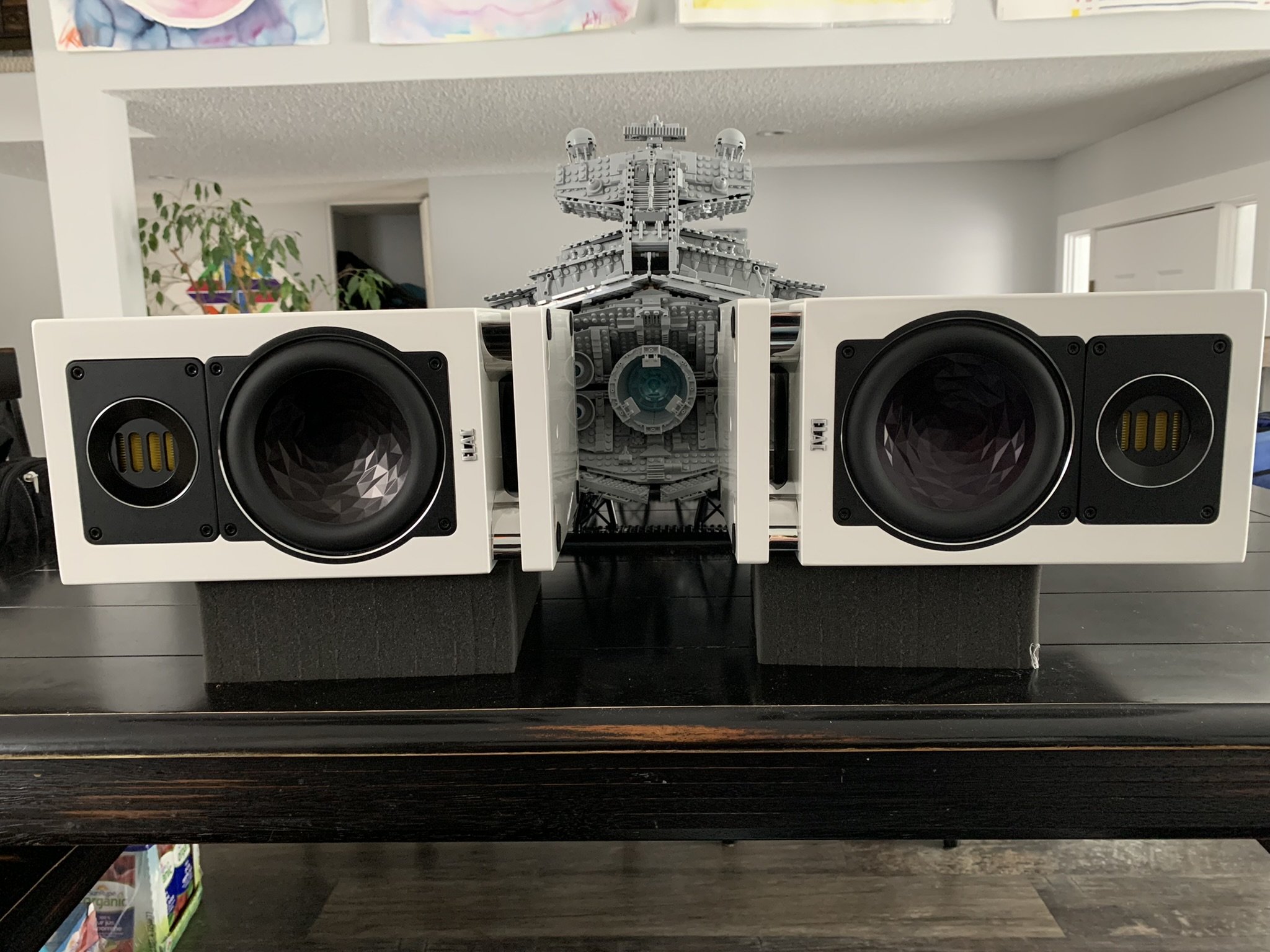A Bigger Audio Bliss!
The Road to Tannoy - HPD 385
~
The Road to Tannoy - HPD 385 ~
In my first article My Long and Winding Road to Audio Bliss I wrote “Buy the best speakers you can afford and be done.” Be done, ah those famous last words!
Have I found my Audio Bliss?
Bigger is better, right?
Scotty’s custom Tannoy HPD 385 system with the Threshold Stasis s550e power amp, JL Audio E112 stereo subwoofers, Sonic Frontiers Line 1 preamp with exaSound e62 DAC.
You might be asking why goodbye to the Ardens?
Either audio gear is meant for change, or I have not found “that” audio bliss. Audio is addictive and a HiFi system elevates your quality of living, even while watching Superbowl LVI.
Read about the Tannoy Ardens here, published November 2021 at eCoustics.com
Tannoy’s current production model, the Legacy Series Arden loudspeakers on AAE Arden Stands.
Caution, audiophile friends are dangerous… to your wallet.
You will gain listening exposure to different audio gear and subsequently be tempted to sell and upgrade, or hoard.
One year before my Arden speaker upgrade, “Mr.T” planted this seed; “Scotty, for these dollars you can be their new owner.” Thinking quietly “no way” I took the bait, the seed was planted.
Mr. T’s nearly perfect room (former owner) with the HPD 385s - @mistachen
We are talking about these Tannoy Monitor High Performance Design (HPD) 385s. Three-eight-five for 385 millimeter drivers, or 15 inch. Enclosed in 360 Liter Onken cabinets.
Hard-edge conversion
The drivers are voice coil matched and fitted with Lockwood hard-edge conversion cones which improve breakup (resonant cone modes up to the 1000 Hz cross over point) and improve driver control (extension). Hard edge conversion in the HPD was meant to mimic the control of gold drivers. Golds were designed before 1970’s digital music, synthesizers and high power solid state amplifiers. Golds were in the era of 5W tube amps and acoustically produced music. HPDs were the recording studio’s improved Golds.
Lockwood hard edge conversion kit previously for sale on CAM
Onken Cabinets
Read about the history and engineering design of Onken Cabinets here; “Making the Onken Enclosure, Jean Hiraga Audiophile No. 2, December 1977” on Planet10-hifi.com
The article referenced describes the Onken as not a bass reflex design, illustrated below.
Hiraga’s Onken Equivalent Circuit
These Onken cabinets are a reproduction of early Japanese design traditionally used for bass drivers with Altec horns on top - much like Devin Turnbull’s OJAS designs. The cabinets are elevated on 3x3 hollow structural steel stands to position the concentric tweeters to ear level. The cabinets are made from 1.0 inch Baltic Birch and weigh close to 300 pounds each. Inside the Onkens boast all the reinforcements of original design and lamb’s wool lining.
Musical HPD magic is created through hand-built crossovers using the best parts including Cardas Litz wire, Jupiter copper foil capacitors, potted Litz, or copper foil inductors and a copper foil autotransformer. Parts are interchangeable for comparison and tuning. The auto(trans)former is used by Tannoy to adjust HF energy; could it be the weakest link of the OEM crossover? Read more about that here link2
Hand-built outboard HPD 385 Crossovers with Litz Cardas Umbilical Cable
Adding a Miflex cap to tune the HF response. The AQ speaker cables were a definite mismatch here and Litz improved the sound.
Another level of refinement are the umbilical cables which connect drivers to crossover and are made from varying gauges of Cardas Litz wire optimized within specific frequency bands. Litz conducts high frequency better by minimizing skin effect.
Initial HPD Listening Impressions:
The Doc listening critically to the Tannoy HPD
Playing How We Do by Nosaj Thing on the album Parallels, the HPDs in Mr. T’s room were surreal; the best I’ve ever heard them. The imaging is wide and these speakers disappear. Tannoy dual concentric drivers are pinpoint coherent. The big drivers reproduce percussion with realness accentuated by lifelike bass created in the Onken cabinets.
The HPDs do not sound like Legacy Ardens.
While they both use 15” dual concentric drivers, there are differences. The HPD drivers use the coveted Al-Ni-Co magnets with traditional pepperpot tweeters. The Legacy Ardens use modern magnets with a tulip waveguide. Tannoy marketing experts want you to believe the tulip waveguide is superior, but Tannoy saves pepperpots for their top tier line.
Tulip waveguide versus Pepperpot design
I'm not the master guru here, I got a lot of advice from Alex Foreman @Hifi_Collecting_with_Alex & @victorianloudspeakerservices Let’s examine differences between a tulip waveguide and HPD pepperpot.
Pepperpot (pp) Design:
In the original Tannoy design, the pepperpot waveguide has a 2 inch duralium diaphragm driven by the same alnico magnet as the bass driver (single magnet dual air gap ) and share the same magnetic properties making them truly dual concentric.
The 2" diaphragm in the pepperpot is coupled down to .5" before the horn, a 4:1 compression ratio. The column of air is acoustically coupled with the diaphragm because of compression resistance giving it the ability to move more air with less input power, thus greater efficiency, less distortion, and a lower xover roll-off. The HPD design uses the inside of the diaphragm, the inverted dome, which is out of phase to the convex dome, so the bass driver is wired out of phase.
The magnet and horn are the perfect length to be in phase with the bass driver at the crossover point. No time compensation in the crossover is needed; sound waves leaving the horn combine perfectly with the sound waves of the bass driver.
This is much more efficient due to the larger diaphragm and better acoustic coupling and the reason why they produce dynamics and midrange much more realistically.
The opposing sound created by the diaphragm is vented into the cap which also lowers the diaphragm resonance.
PROS:
Large 2" diaphragm crosses over lower with less distortion adding extra body to upper mids.
Higher efficiency gives much better dynamics.
More realism in lower treble frequencies due to better mechanical coupling to the air also the reason for the dynamics.
Proper length to be mechanically in phase with the bass driver without any crossover tricks being added.
Same magnetic circuit as bass driver means they truly are Concentric and share the same properties.
CONS:
Larger diaphragm with more weight means upper frequencies roll off earlier 16 khz upwards.
Less airy sounding due to slight roll off in frequency extremes.
Because of the frequency response of the constant directivity horn they use a notch filter to drop the level at the horns acoustical resonance point. Think of a long metal horn resonating adding efficiency at a certain frequency; some people still claim to hear horn honk.
More expensive to manufacture due to machining of horn and pepperpot.
(Alex’s opinion) Out of the 25+ pairs of Tannoy dc's I've owned I favor the dynamic sound of the pp versions, side by side you can hear slightly more coloration in some areas but the tulip waveguides sound flat when sudden bursts of mid energy are unleashed. The true Tannoy design just sounds more real.
Tulip Waveguide (wg) Design:
The tulip waveguide acts as a phase plug and is designed to control propagation and dispersion of different frequencies. A smaller diaphragm (to the pepperpot) is directly loaded into the horn behind the tulip waveguide. Looking through the waveguide the whole diaphragm is exposed to the horn, a 1:1 ratio so there is no compression and in turn no resistance to couple a column of air. The diaphragm’s surface area directly radiating into the horn at 1:1 isn't a compression ratio, it's equilibrium. Looking at many tulip waveguide Tannoys, you'll notice they are all different depending on the bass drivers cone profile and cover frequency.
PROS:
Smoother treble response due to separate suspension termination providing resonance damping.
Better extension due to smaller lighter diaphragm.
Cheaper to manufacture (pro for Tannoy managers).
As with xover , the pepperpot 12's and 15's, have a 1 kHz xover but still have audible energy down to 600hz or so as the big diaphragm in the horn is still able to move air at this frequency, so the crossover slope isn't steep; the 10's are 1.0 kHz and still go down a lot further.
(Alex’s opinion) With the tulip wg, my Glenair 15's were 1.3khz but no energy under 900hz due to the 36mm diaphragm; my Glenair 10's 2.1kHz, Stirling tw's were 1.8kHz etc. etc.. I always find without the horn transitioning in from the lower mid frequencies and in turn just jumping into play in the crucial part of our hearing we are leaving a big driver to do all that upper stuff itself. In turn, there seems to be less body and detail as there is when that PP horn is filling in the gaps! Comparing female vocals and sax back-to-back with these two types, tulips sound thinner and less dynamic. There is a reason Tannoy save the alnico versions for the top tier now.
CONS:
Higher crossover point due to smaller diaphragm not able to reproduce lower frequencies.
Higher distortion in mids due to smaller diaphragm.
Less dynamic being less efficient due to not being coupled by a column of air directly to the diaphragm by compression.
Tulip waveguide Tannoys are dual magnet so the tweeter has its own ceramic magnetic circuit as does the bass driver.
About alnico (aluminum, nickel and major part is cobalt)
(Alex) I remember my dad telling me in the late 70's customers were complaining about the early k series sounding slightly harsh and when he was talking to Tannoy in Scotland about this at work they said they didn't want to stop building the HPD and go to the k series (which is basically the same with barium ferrite magnet ) but they were forced to because there was a world shortage of cobalt in the late ‘70's, so they had to bite the bullet and go to ferrite. It took them a few years to get the ferrite pepperpots right, time alignment in xover because the horn was shorter.
The tulip waveguide has a signature.
Legacy Series Tannoy Eaton loudspeakers at The Audio Room in Calgary, Alberta, Canada
Months after selling the Arden’s, I had an opportunity to listen to Legacy Series Eaton loudspeakers paired with an Audio Research i50 integrated tube amplifier and Naim Uniti Atom source. I identified that familiar Tulip waveguide signature.
The Arden’s have a ported bass reflex cabinet which boosts low-end efficiency. Because a ported design relies on acoustic amplification, that can result in bloom and lack of low frequency control. No designs are perfect, and engineers continuously balance deficiencies to gains.
(Alex’s contribution) Ported speakers develop reinforcement at frequencies the ports are tuned to. Sound also passes through above this point as the back of the cone adds to the direct radiating bass from the front of the cone. Bloom is caused by (1) group delay beig a time delay between sound from back of cone and front, also (2) box resonance being amplified by the port, and (3) midrange seepage through the port too. Ported speakers roll off very fast below the tuning frequency due to cancellation. You get more output up until tuning point with quicker roll-off and less definition in bass due to the points noted above. In very good, ported designs this is very minimal and generally the problem lies with too much gain for the room (room issues).
Legacy Arden’s in Carda’s rectangular room speaker configuration
Listening to Brothers in Arms by Club for Five, I prefer the deep vocal extension of Finland’s Tuukka Haapaniemi’s voice on the Ardens, his timbre has a beautiful bass gain developed by the reflex cabinet. Listening to Money for Nothing by Dire Straits, I prefer the forward presentation and wall of sound developed by the Ardens.
My first impression of the HPDs was one of question, “where did the wall of sound go?” Sometimes different sounds wrong. The HPDs are gentle and not forward presenting. They are holographic and very revealing, more so than the Ardens. For me they aren’t a rock or metal speaker; exceptions to the rule: Judas Priest Hero, or Van Halen Van Halen (produced on Tannoy).
Resolution
The HPDs are highly resolving and shine with great recordings, clean power, and quality Hi-Fi gear; perhaps this is why they were so widely used as studio monitors. They excel with acoustical recordings, operas and symphonies. They reveal compression and poor recordings much more so than the Ardens. They also sound great watching NASCAR or Superbowl LVI on TV; the center image is perfect.
Bottlenecks discovered.
Given the refinement in the crossovers, driver resolution and Onken cabinets, I made a huge discovery with speaker cables. Previously these HPDs were paired with Silversmith Fidelium ultra low mass cables. I initially used AudioQuest Rocket 44 speaker cables, which are still great cables; however, when I switched to Solen H49 Litz wire I removed a massive bottleneck. Litz cable is highly regarding within the industry.
Litzendraht cable consists of many individual thin copper strands which are individually insulated of thin enamel coating. The H49 consists of seven bundles of seven wires per bundle, all individually insulated and interwoven. This limits high frequency current concentration around the perimeter of a larger conductor core, known as skin effect. Current is uniformly distributed between the ID and OD of each small strand. Termination of Litz wire is fussy, watch this Cardas video how to, Tinning Litz.
Build Credit
Let me give credit where credit is due. I purchased this set of drivers in the Onken Cabinets with the crossovers and umbilical cables as-is. I did not go through the painstaking steps of incremental refinement; my buddy and his buddy did. I’m not even a Tannoy expert other than the exposure I have with this set, the Ardens, research, tinkering and listening along the way - here, there, at stores and with friends.
I do claim some Tannoy credit.
The Tannoy Story spans far back to pre-war era announcement systems, monitoring in recording studios and into Hi-Fi listening rooms. Nelson Pass even uses Tannoy HPD 385 drivers in Jensen cabinets specifically because they reveal smallest changes in system and amplifier design. (PS: I am looking for a picture of Nelson’s HPD’s to post here with permission; perhaps Nelson will continue this conversation and I can add more design truths.) For more discussions on Tannoy technology, refer to the links provided in the references.
Promoting Positive Audio Culture & Human Connections
Scott and Kurt Promoting Positive Audio Culture for HiFyed Youtube channel
Audio is addictive and a HiFi system elevates our quality of living. For me, when someone identifies as an audiophile or music enthusiast, I immediately know we have much in common and can talk for hours. More importantly, most people have a remarkable backstory outside of audio. I have built many great relationships starting with Hi-Fi, including this one with Kurt Villanueva. Make sure to check out Kurt and Marcos on their YouTube channel HiFyed; the HPDs may be found there.
My Final Audio Bliss?
〰️
My Final Audio Bliss? 〰️
Are the HPDs my final audio bliss?
Tannoy Prestige Gold Reference Autograph Mini
I haven’t arrived there yet. I have Tannoy GR Autograph Mini’s on their way. Can these modern Autographs be my next Tannoy Road to Audio Bliss?
Find out in my next series on the Road to Tannoy.
For sale?
For these dollars you can be their new owner (HPD). If you’re interested email me at aae@telus.net or find me on Instagram @audio_acoustic_engineering. Regards, Scotty Lylander.
Wait.. I didn’t even get to talk about the importance of amplification!
Your comments are welcomed and valued, while I wait to discover how to add a comments section, please email to aae@telus.net or arrange to discuss on IGTv.
References:
In my research I’ve come across many fascinating resource on Tannoy, be sure to read more here:
For all things Tannoy Gold, check out The Tannoy Monitor Gold Website
TANNOY Monitor Gold dual concentric speakers (hilberink.nl)
I appreciated seeing the Monitor Magnet Disassembly
Tech Specs on the Tannoy Monitor HPD
Tannoy Monitor HPD Speakers (44bx.com)
A good blog on Gold and HPD
TANNOY Monitor Gold & HPD: Sonic Differences - Gearspace.com
A blog on Hard Edge
Tannoy@groups.io | Original vs. Hard-Edge cone kit for HPD and 38xx drivers
A video on compression drivers and phase plug design


